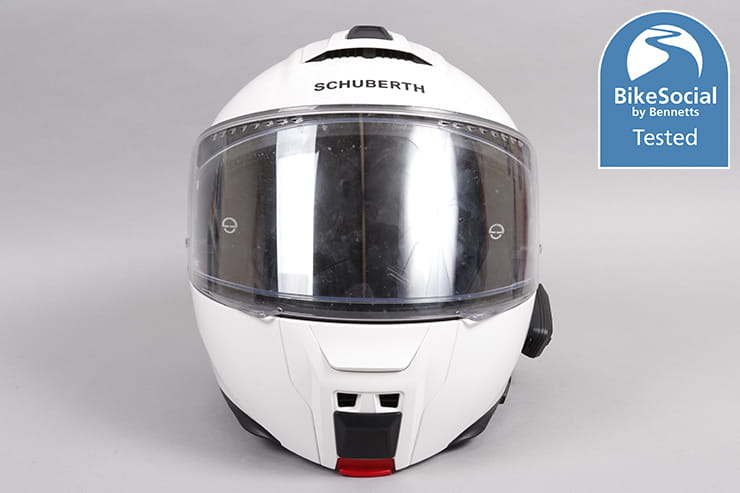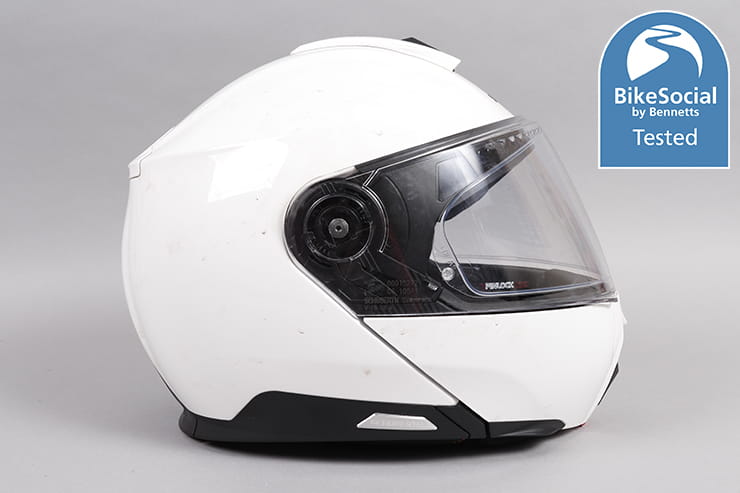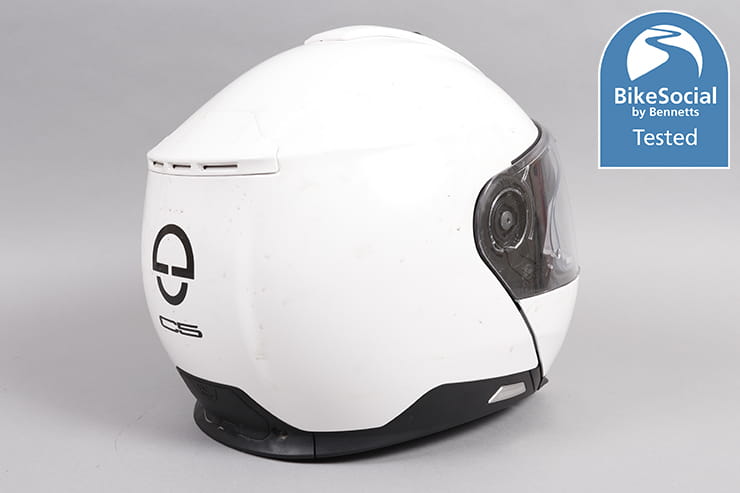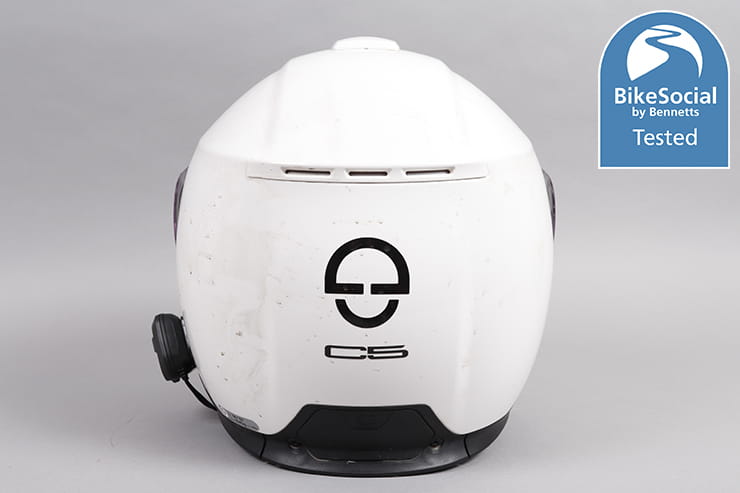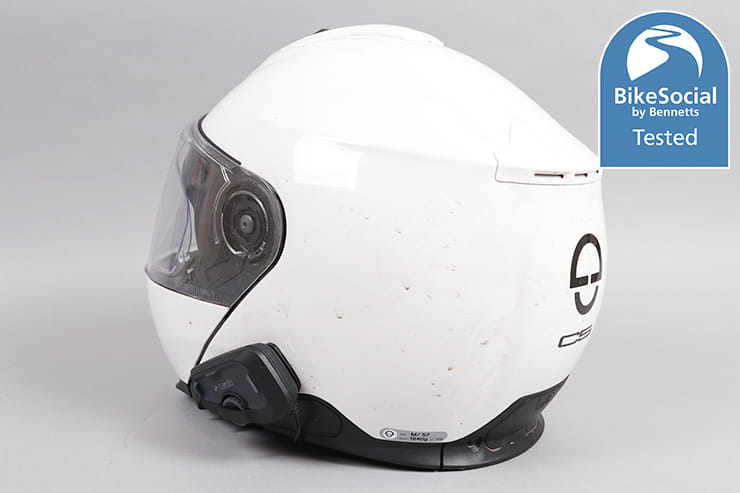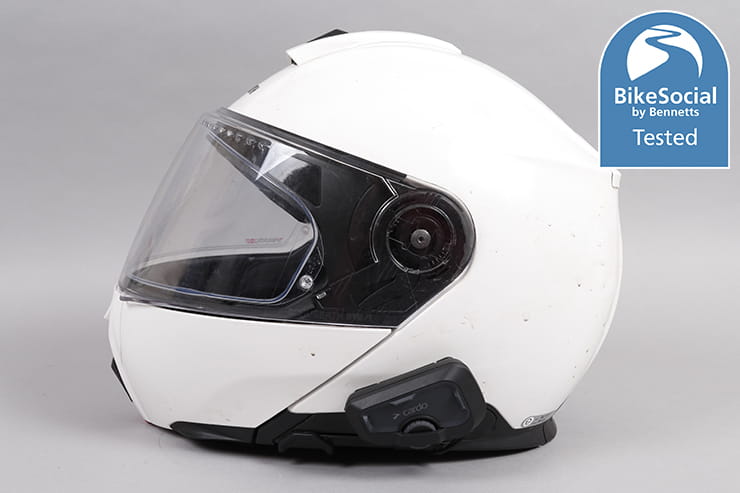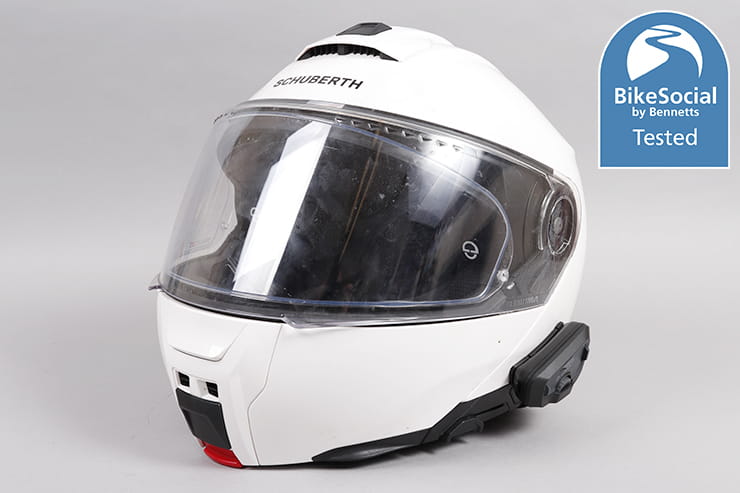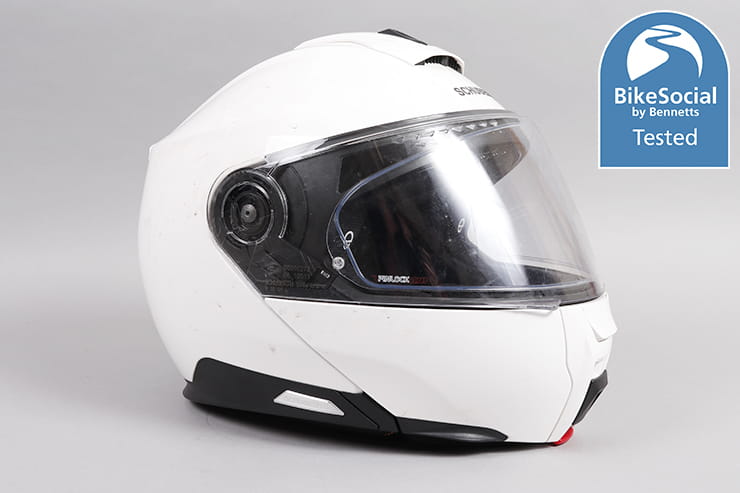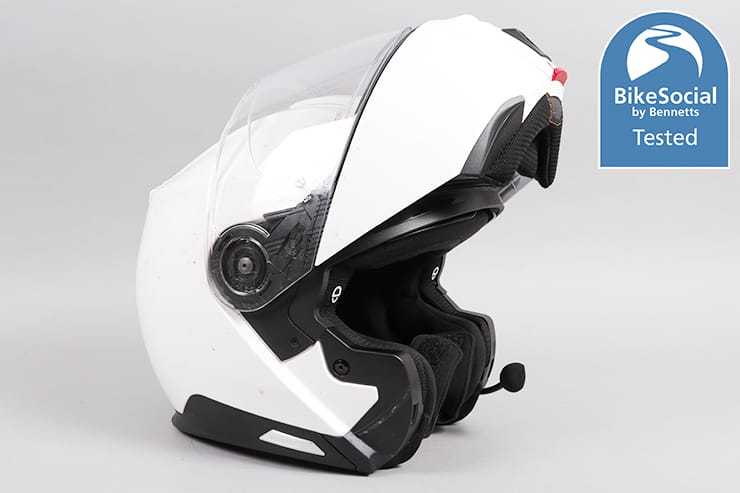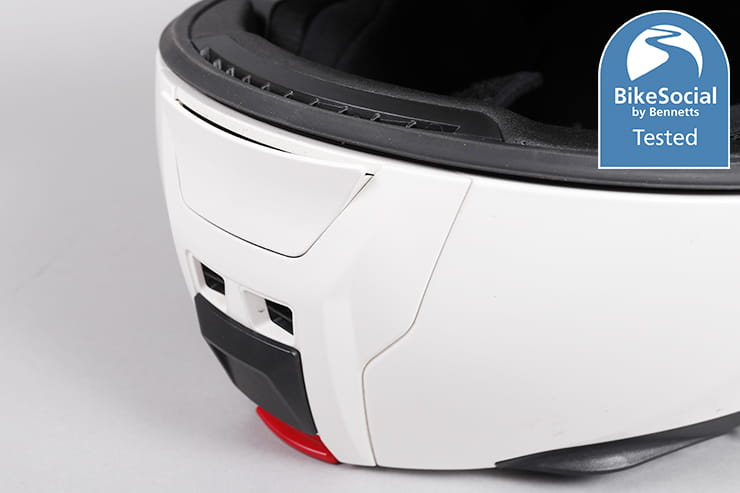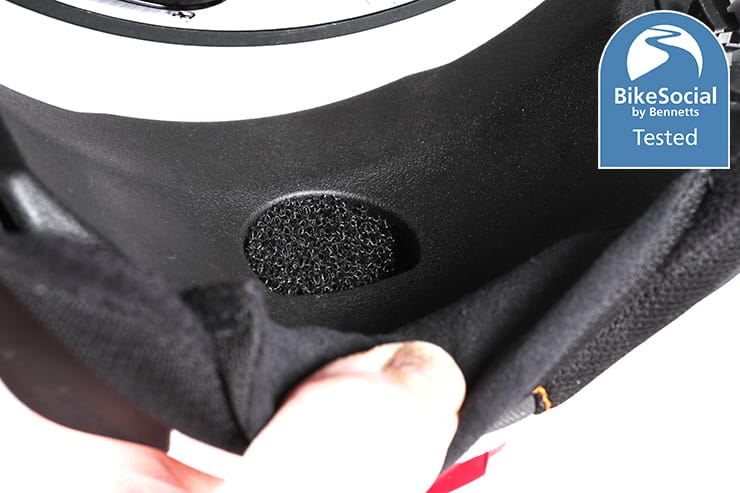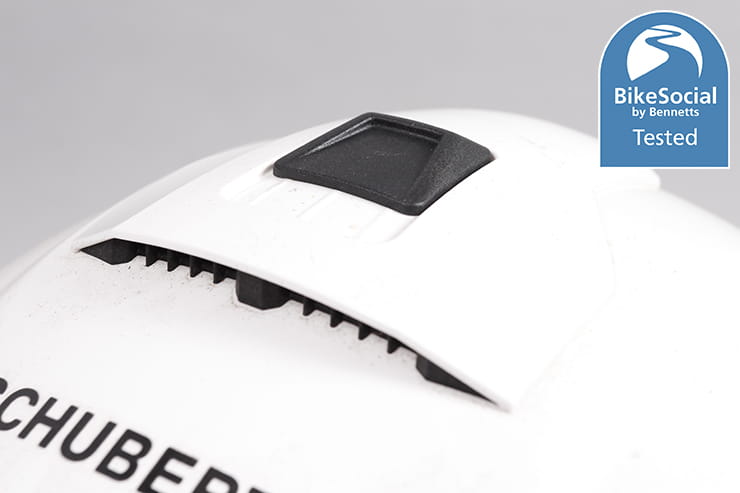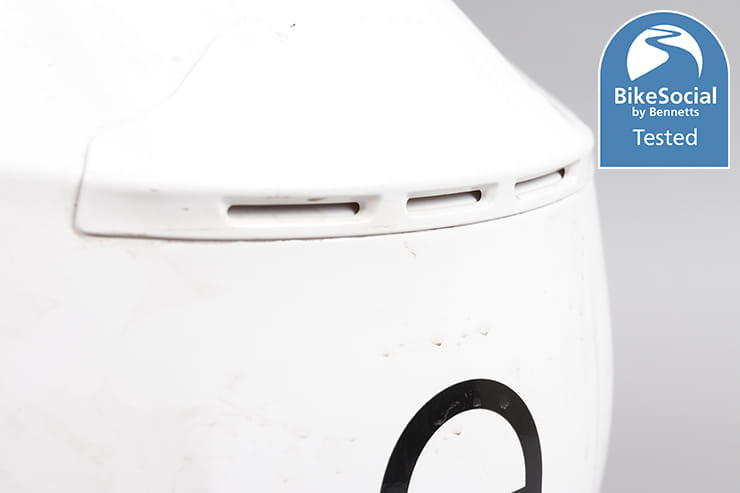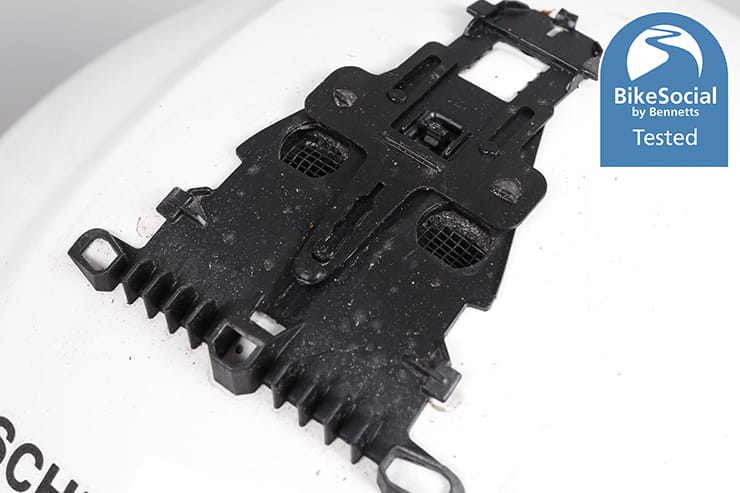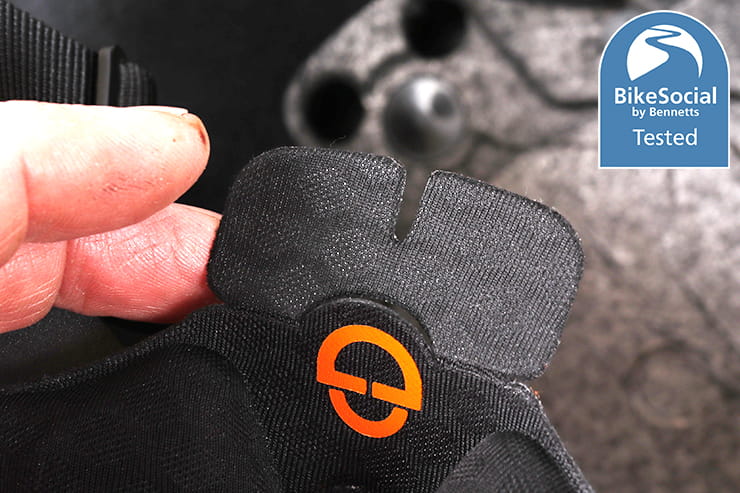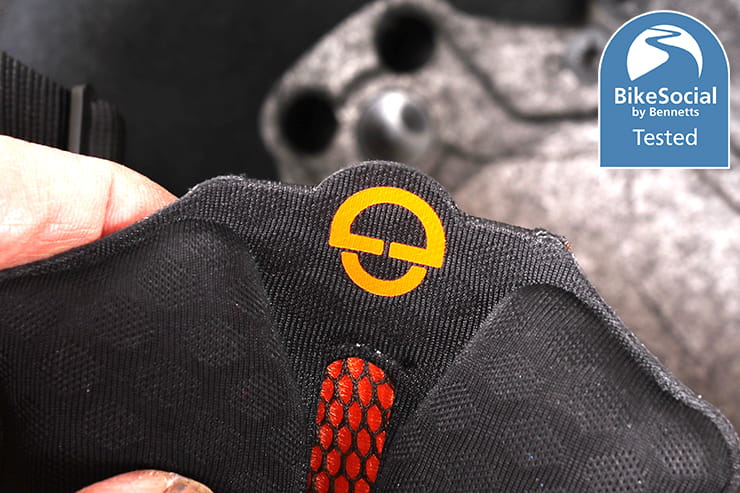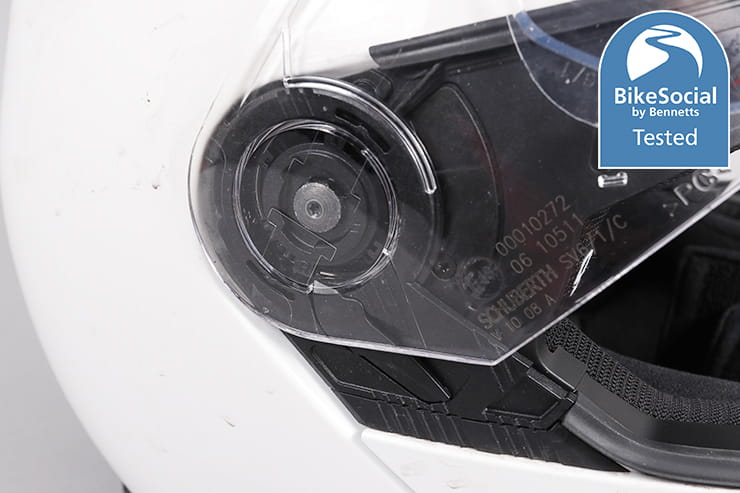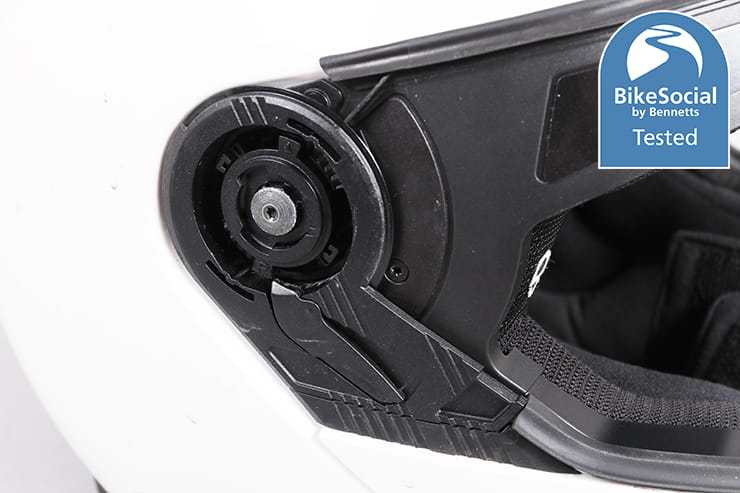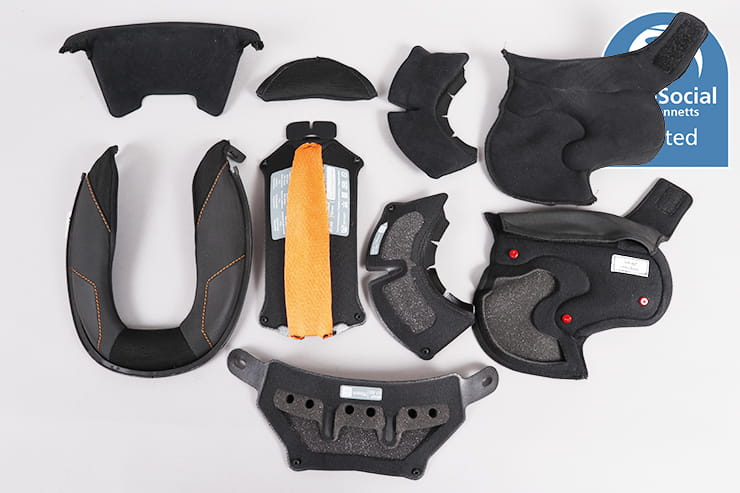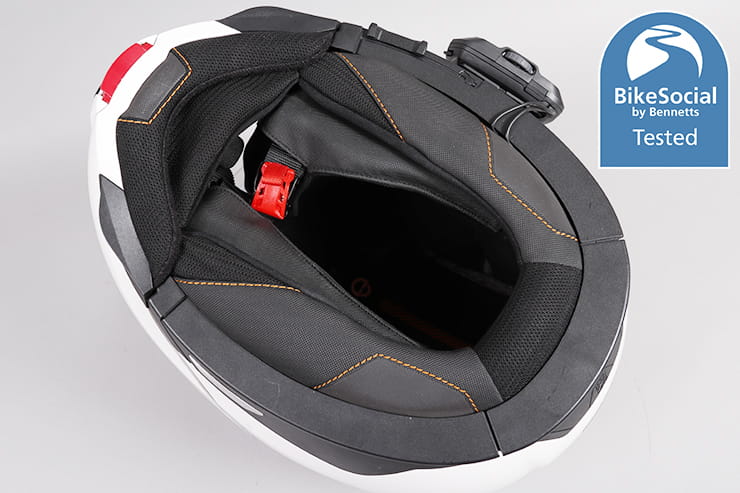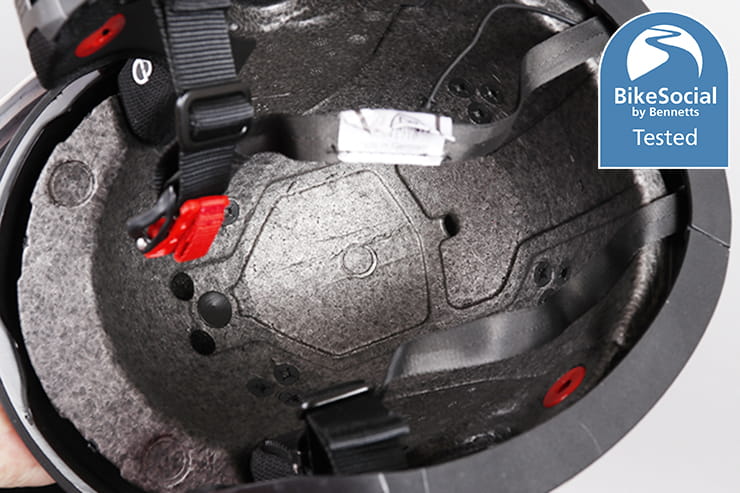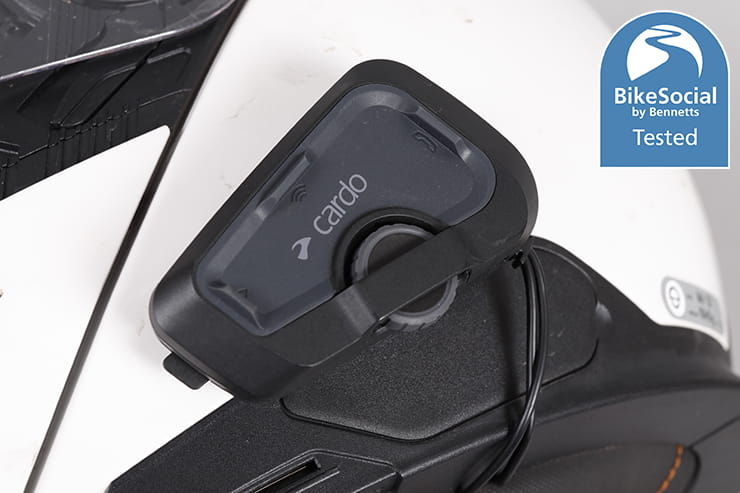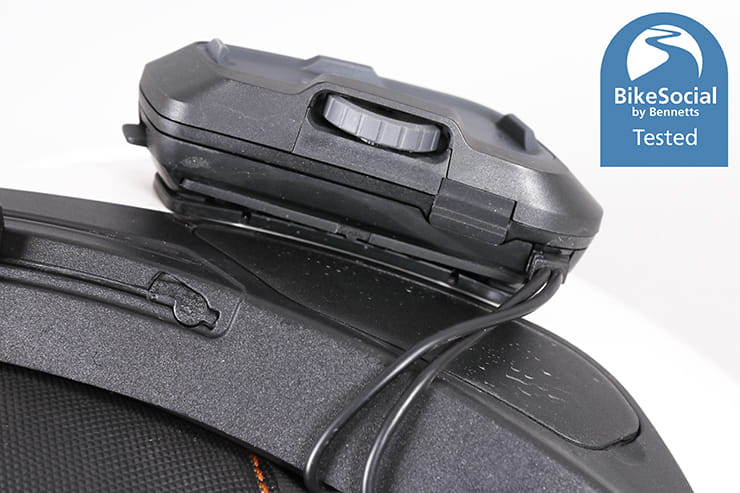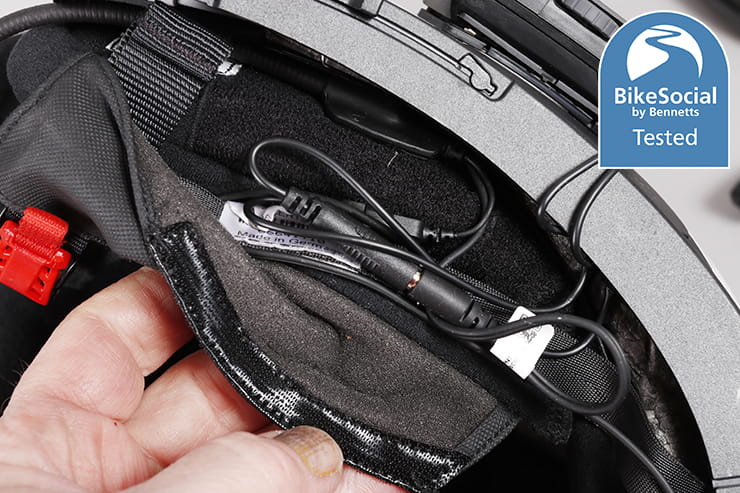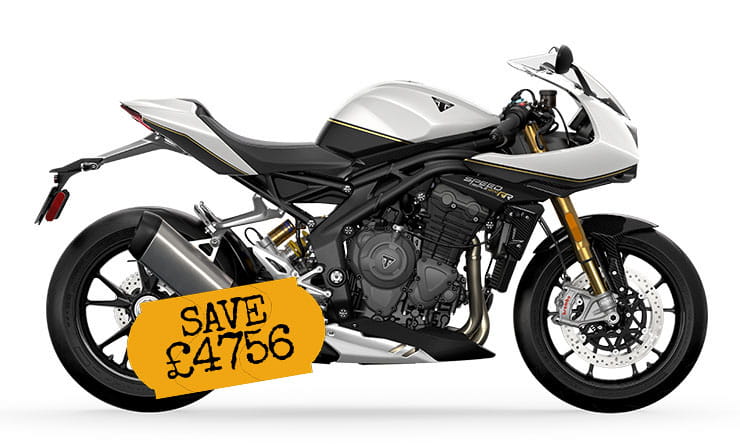Date reviewed: February 2022 | Tested by: John Milbank | RRP: From £499.99 | bikerheadz.co.uk
The Schuberth C5 on review here is arguably the most important helmet released in many years. For buyers, it takes modular – or flip-front – lids to the next level of safety with ECE 22.06 certification, meaning it’s had to pass a series of much tougher tests than those in the existing 22.05. You can learn more about the new standards in this video.
But it’s also important for Schuberth, because while the C4 Pro addressed many of the issues with the C4, the damage had been done and Shoei’s long-established Neotec took the crown for many riders, myself included.
The C5 is a complete redesign, looking – and feeling – nothing like the range before it. I’ve used it on a variety of bikes in all weathers for around 1,000 miles now, and if you’ve seen my first impressions video, you’ll know I was impressed, but I wanted to cover everything before giving my final opinion…
UPDATE Nov 2022: Unfortunately the C5’s visor no longer stays open at speed – the ratchet has smoothed off slightly, meaning it drops over around 40mph (depending on the bike). Even shaking the helmet can cause the visor to drop.
I’ve also had an intermittent issue with the Pinlock, which got completely overwhelmed during a particularly cold and wet ride. This hasn’t happened on any other helmets, and appears to be due to the air being extremely still on the inside of the visor.
The C5’s top-vent can get extremely stiff when it’s dirty. Fortunately it’s removable, but if you ride in winter particularly, be prepared to take it off every so often to clean it. You may wish to use a very small amount of silicone visor lubricant on it.
While mine hasn’t failed, some owners have also reported the chin vent breaking. This has been replaced under warranty, though in some cases it took a while to get the parts.
For and against
- Meets the tough ECE 22.06 safety standard
- Excellent ventilation
- Secure chin mechanism
- Visor mechanism wears and starts to drop in use
- Extreme conditions can overwhelm the Pinlock
Outer shell
First impressions when you pick up the Schuberth C5 are that it’s a quality bit of kit; gone is the plasticky, rattly feel of the C4, with the glass-fibre shell being well-finished and the chin bar locking securely into place with one hand whether it’s on or off your head (some helmets can have an unreliable lock when worn).
My only slight grumble with the finish is that the logos are vinyl sitting on top of the paint, so they could start to peel eventually. On the other hand, they can be removed if you want the de-badged look. These logos are reflective though, which apparently wouldn’t have worked so well had they been under any lacquer.
The shell shape is distinctly different to previous Schuberths, looking more like a ‘normal’ lid with its flatter front. I much prefer it, and there’s still plenty of space for my chin and nose.
The C5 is homologated as both P and J, meaning it can be worn open or closed while riding; there’s a small red tab on the left to lock it open, but I’d be surprised if you ever felt the need to use it as the chin bars stays up securely on its own.
Weight
Weighing 1,695 grams in this medium (it’s claimed 1,640 +/- 50g), it’s about the same weight as the C4 Pro and Shoei Neotec II. To be honest, the weight of any helmet is pretty much academic; while dealers will love to pass you them one-handed or two handed, depending what impression they want you to get – and side by side some do feel heavier – what really matters is how they drag in the wind. You’d have to have a pretty weak neck to worry about the few hundred grams difference between most lids, but what matters here is that the aerodynamics of the Schuberth C5 are excellent, with very little resistance directly into the wind, or when turning your head for a shoulder check.
Ventilation
The C5’s ventilation is excellent. The chin has two vents – one that feeds up inside the visor and up to your brow, the other that directs air flow straight to your mouth via a removable filter. Moving to the top of the lid you’ll find a slightly stiff, but still very usable slider that opens two ports directing air down onto the top of the head, flowing back to the rear exhaust and down, out of the rear neck skirt (keep this clean to ensure it moves smoothly).
Brilliantly, this top vent can be removed for cleaning and has a mesh cover that stops large bugs getting in (having had a horsefly get in another helmet’s vent when riding, I appreciate this).
The lining has a flap that can be flipped over to cover these two ports inside, while still allowing air in and to flow across the top of the material. It doesn’t block air entirely; some moves to the sides of the upper head. It’s a neat idea but not one that I’ve used much since the first few fiddles.
Ventilation is also provided with a ‘city lock’ position on the visor – open it up then close it down without latching it and it leaves about a 5mm gap around the bottom edge for more airflow. This is handy for lower speed riding, but once on the open road it does tend to shut itself fully.
UPDATE Nov 2022: The C5’s top-vent can get extremely stiff when it’s dirty. Fortunately it’s removable, but if you ride in winter particularly, be prepared to take it off every so often to clean it. You may wish to use a very small amount of silicone visor lubricant on it.
While mine hasn’t failed, some owners have also reported the chin vent breaking. This has been replaced under warranty, though in some cases it took a while to get the parts.
Visor
Unusually, a Pinlock 120 (the maximum performance of anti-fog insert) is included ready-fitted to the visor; you normally have to put them in yourself.
While working at the NEC for the bike show in December, I had a soaking wet and freezing-cold ride home of an hour and a half; during this the sides of the visor at the rear thoroughly fogged up – showing just how much moisture was there – but the Pinlock resisted well, just letting a little damp in at the bottom. What impressed me most during that ride was how little I had to keep opening the visor to reduce the fogging on my glasses. I still had to do it occasionally of course, but anyone who wears specs will appreciate the excellent chin vent.
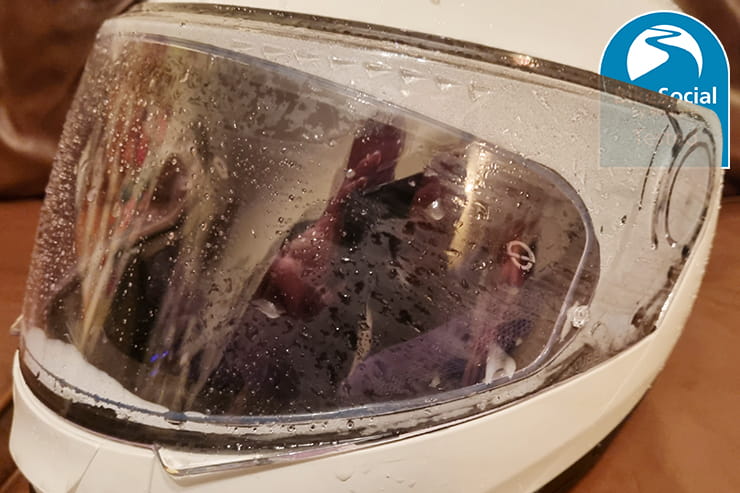
Riding home from the NEC saw the Pinlock hold up well, but it also highlighted just how much condensation can build up inside the Schuberth C5 with no apparent means to escape. On a later ride, the Pinlock was overwhelmed, which dangerously limited vision.
However, more recently I had a very cold ride in pouring rain, and after half an hour I was starting to see clouding in my peripheral vision. After an hour, the inside of the Pinlock had fogged significantly.
I’d never adjusted the Pinlock, so once everything had dried out I checked and it wasn’t sealing perfectly against the visor. To adjust it, remove the Pinlock then carefully press the pins from inside to the outside. Once they pop clear, you can rotate them about a quarter turn, press them back in then refit the Pinlock. At this point the seal should press firmly against the visor all the way around; if not, repeat the process. Your dealer would be able to help if you were stuck, but this isn’t something unique to Schuberth – Pinlocks do need to be fully sealed or they just can’t work.
The amount of moisture that can – in very cold and wet riding conditions – build up inside a lid will push a Pinlock to its limit, and being able to keep the visor firmly shut for so long compounds this, leaving the Schuberth to appear to be something of a victim of its own success. Making sure the Pinlock is fully seated certainly helps, but I’ve spoken to the UK distributors and it’s something that’s being checked closely with Schuberth. As with all our reviews, we’ll keep this article updated.
The drop-down sunshield is operated by a slider on the lower left of the shell, with a small tab that can be rotated out to limit its travel. I have it at its lowest position and it doesn’t hit my nose; if anything, I’d like it to go down a little more to reduce the line of light. While I prefer a dark outer visor for sunny days, when you get caught out by bright sunlight it’s a relief to have, and it’s certainly no worse than others I’ve used.
Removing and refitting the visor is simple thanks to two levers and no need for any force.
UPDATE Nov 2022: Unfortunately the C5’s visor no longer stays open at speed – the ratchet has smoothed off slightly, meaning it drops over around 40mph (depending on the bike). Even shaking the helmet can cause the visor to drop.
I’ve also had an intermittent issue with the Pinlock, which got completely overwhelmed during a particularly cold and wet ride. This hasn’t happened on any other helmets, and appears to be due to the air being extremely still on the inside of the visor.
Lining
While the Schuberth C5 has one of the most complex linings I’ve encountered, with no less than nine individual parts, it’s surprisingly easy to remove and refit. And it’s a hell of a lot simpler than the previous Schuberths thanks to a redesign of the easy-to-snap pins that featured on the old models’ neck skirts, and cheek pads that are much quicker to remove now, despite the straps that run to the rear to help prevent the lid rolling off in a crash.
Much of the lining is customisable, with the importer offering various different sizes of cheek pads, brow cushions and more. A good dealer will carry stock of these and be able to help you find the perfect fit.
Can you fit any intercom to the Schuberth C5?
The Schuberth C5 includes speakers, wiring and antenna for the optional integrated SC2 intercom system. At £349.99, it’s not cheap, and unfortunately you can’t fit the comms kit from the previous Schuberths. However, this is the latest Mesh technology, meaning you can more easily pair up with others in a larger group than Bluetooth offered, and it doesn’t matter if they change order while riding.
Schuberth comms are made by Sena, so other Sena Mesh devices will be compatible. As will standard Senas and older Schuberths, just without the improved group riding performance. If you want to know if it’s something you’d be interested in, check out our review of the Sena 50S, which is basically the same unit.
There can be no argument that having the intercom built into the lid has some big advantages, not least that there’s no wind noise from a device stuck on the side. The SC2 also uses a remote button set that makes it far easier to control than the older version, so it looks to be a good bit of kit.
But you do have to question the expense compared to a standard unit that you could swap between any helmet, especially when you consider that the speakers came with the C5. Still, buy it with the helmet and you should save the VAT, potentially taking it down to £280.
The other consideration is that ECE22.06 includes accessories in the homologation, so putting any other intercom on would potentially mean the lid’s no longer homologated, which could be argued to be ‘unsafe.’ Still, most Pinlocks were not homologated, which is why they usually come in the box, not ready fitted!
Realistically, there will be people who want to use their own choice of intercom, and I can confirm that it’s possible to fit one, as long as the speakers aren’t much bigger than 40mm. 45mm ones might go in, but I was only able to test Cardo and Sena versions – the largest I tried were oval JBL Cardos, being 40mm in one direction and 45mm in the other. I rode with these in with no problems.
The speakers installed in the C5 are standard Sena, with the same connectors, so you could easily leave them in place if you had a Sena, but I fitted a Cardo intercom to prove the point; the only slight fiddle was getting the boom mic in place as the Schuberth is designed to have one plug in.
Technically, your helmet warranty would be void if you fitted your own intercom, and Schuberth – and its importer – will advise against it. Having said that, you don’t need to do anything that would cause any harm or damage, so a warranty claim that in no way related to the fitting of a device shouldn’t be affected. Ultimately, it’s your call.
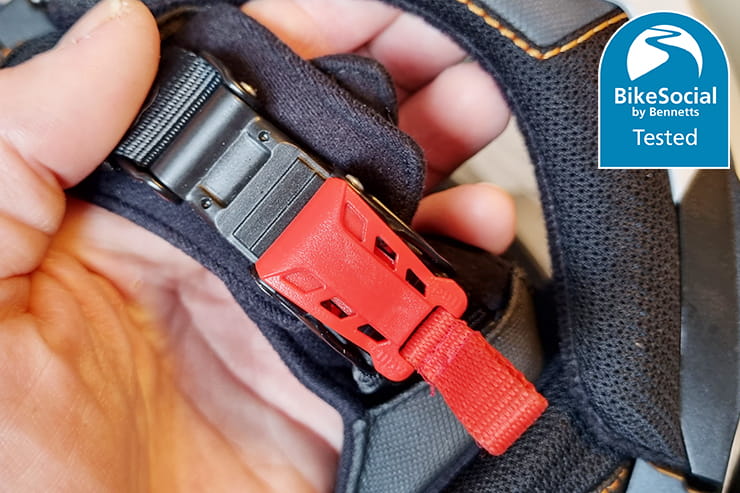
Fastening
The Schuberth C5 uses a micrometric ratchet fastener, which is exactly what I’d expect of a touring helmet. This convenient style needs setting once, then gives a decent latitude to ensure you get a good, tight fit every time. And unlike a double-D, you can operate it while wearing gloves.
Fit
Overall I find the Schuberth C5 to be very comfortable indeed, the package coming together well to fit securely, while remaining all-day-comfortable. Of course, we’ve all got different-shaped heads, but I’d be surprised if most people couldn’t find a good fit with this level of customisation in a decent store. I should point out that I usually get on well with Arai, HJC and Shoei, but have struggled with Schuberths in the past; this one fits me great with no need for customisation.
My glasses fit easily into the Schuberth, so no problems there either.
Noise
Schuberth is famed for its wind-tunnel testing, so it’s interesting to hear that the C5 is rated as being fractionally noiser than the C4. But… like weight this is a little irrelevant as it’s the fairing on your bike that causes the buffeting and resulting noise, and all helmets from all brands are tested on naked bikes.
In my experience, the C5 is very good, and one of the queiter lids I’ve worn thanks to the good seal around the neck and well-proportioned fit. The fact that it’s a modular flip-front – with the resulting joins in the sides – makes it all the more impressive.
I’d say it’s quieter than the Neotec II, and just better all round than the C4 or C4 Pro. It still needs earplugs though.
For more information on why earplugs are vital with any helmet, and advice on which are the best, click here.
Three alternatives to the Schuberth C5
Helmets tested to ECE 22.06 are few and far between at the moment, but that doesn’t make the exisiting 22.05-compliant models obsolete.
- The Shoei Neotec II is the obvious and very worthy competitor here, starting at £519.99 for plain colours and rising to £599.99 for graphics. A revised version for ECE 22.06 can’t be far away though…
- The Caberg Levo is £319.99, rising to £382.99 for graphics. We gave one to a riding instructor to test, and while it had the odd foible, he was very impressed.
- The Schuberth C4 Pro is available at 30% off here at the moment, which might make it tempting. Personally, though, having used both I’d recommend saving the extra for the C5.
These are just three of many alternatives – you can find all the helmets we’ve tested here and be sure to regularly check for the discounts available through BikeSocial membership.
Schuberth C5 review: Verdict
The Schuberth C5 is one of the best helmets I’ve used, and – sorry Shoei – it replaces the Neotec II as my favourite all-rounder. It’s well-styled, it’s comfortable, it’s relatively quiet, it’s got great ventilation and it’s certified to the tougher ECE 22.06 standard, meaning it’s currently one of the safest flip-fronts you can buy.
My only reservation is that the Pinlock was overwhelmed on one very cold, wet ride. If you don’t go out in these conditions then don’t worry, but I will be keeping this article updated if I can get it to happen again. In three months I’ve only had the opportunity to ride in such poor conditions twice, and the issue only occurred once. At this stage, I can just promise you that I will keep updating.
Overall, I think Schuberth has a winner here… while ECE 22.06 is going to really shake things up over the coming year or two, this is now my go-to helmet for almost all of my riding.
UPDATE Nov 2022: With the release of the Shoei Neotec 3, the Schuberth C5 faced challenges, but it's the disappointing visor mechanism that really spoils it, and makes it hard to see a good reason to recommend over the new Shoei.
UPDATE Nov 2022: Unfortunately the C5’s visor no longer stays open at speed – the ratchet has smoothed off slightly, meaning it drops over around 40mph (depending on the bike). Even shaking the helmet can cause the visor to drop.
I’ve also had an intermittent issue with the Pinlock, which got completely overwhelmed during a particularly cold and wet ride. This hasn’t happened on any other helmets, and appears to be due to the air being extremely still on the inside of the visor.
The C5’s top-vent can get extremely stiff when it’s dirty. Fortunately it’s removable, but if you ride in winter particularly, be prepared to take it off every so often to clean it. You may wish to use a very small amount of silicone visor lubricant on it.
While mine hasn’t failed, some owners have also reported the chin vent breaking. This has been replaced under warranty, though in some cases it took a while to get the parts.



